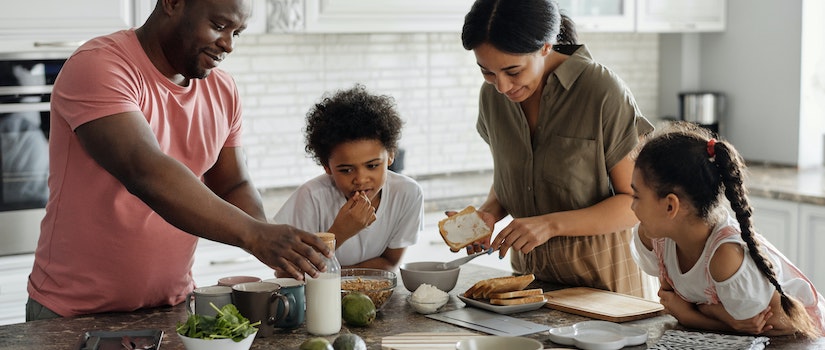Articles & Videos
Exploring maths outside the classroom – how parents can help
Categories
Subscribe to our newsletters
Receive teaching resources and tips, exclusive special offers, useful product information and more!
Exploring maths outside the classroom – how parents can help
Maths Trek 1/3/22

Most of us can remember those magic maths moments from our childhood. Learning about measurement in the classroom and seeing it come to life when baking with our grandparents. Or learning about angles and watching our parents parallel park with new appreciation.
There are endless opportunities for students to make maths connections in their everyday lives. Here are some simple strategies and activities to pass on to parents and students so they can explore, discover and enjoy maths together at home! You can copy and paste these into a ‘welcome letter’ to your parents, or pick a couple each week to send out in your school newsletters.
Try these strategies
Use questioning effectively
Questioning is a powerful tool you can use to help your child develop their understanding in mathematics. When children are asked the right kinds of questions, it can strengthen their understanding, develop their problem-solving skills and improve their reasoning processes. It is often tempting to jump in and show your child how to solve a problem if they are struggling. Try to avoid doing this and ask open-ended questions, which might also buy you time to figure out the problem yourself.
You could ask:
- What do you think you are being asked to do?
- What do you already know?
- Where do you think you should start?
- What do you think you should do next?
Remember, the one who does the thinking does the learning, so ask questions to encourage your child to consider their maths work carefully.
Embrace errors as a learning opportunity
Maths requires practice, and making mistakes is an important part of the learning process. Children can become easily frustrated when they make mistakes and often see them as a failure. Encourage them to recognise mistakes as an opportunity for growth and deeper understanding.
If your child makes a mistake or gets an answer wrong, instead of correcting it for them you could ask:
- Are you sure? Does that make sense?
- How did you get to that answer?
- How can you do it another way?
- What does it remind you of?
- What would happen if you …?
Look for maths everywhere
If we want students to truly engage with maths, we must encourage them to look outside the classroom, and extend learning at home. When maths is relatable and has a purpose, it becomes an exciting and enjoyable activity. Make maths fun for your child by playing games that require mathematical thinking, or looking for maths in everyday activities like shopping, cooking and even sport!
Encourage your child to try these activities
Number and algebra
Let’s go shopping: Set up a shop using empty food packaging, small toys and novelty items. Price items exactly 5c, 10c, 20c, 50c, $1 and $2. A cutlery tray makes a great cash register.
Guess and write: Take turns to trace a number (to 100) on each other’s back. Then write the number you each think it is, in words, on a piece of paper.
Measurement and geometry
Create a map: Create a map of the bedroom or kitchen areas of the house or, if time permits, the house in its entirety.
String treasure hunt: Find three things around the house that are the same length as a random length of string and draw them. Vary the activity by finding three things shorter than or longer than the string.
Water play: Collect an assortment of containers of different shapes and sizes, for example: ice cream containers, buckets, teapots, baking trays, water bottles, jugs, litre bottles or eggcups. Guess how many cups of water it takes to fill each container. Sort containers from those with greatest capacity to least capacity.
Inside out: Carefully pull apart a cardboard box, such as a muesli bar box, to investigate which 2D shapes it is comprised of. Design and colour your own brand of muesli bar on the inside and put it back together inside out.
Bake off: Find a baking recipe that follows the imperial system and convert it to the metric system as you bake. Take turns converting each of the ingredient measurements!
Tessellating tiles: Find a tile pattern in your house and recreate the patterns in bright colours with cut-out pieces of coloured paper.
Modelling: Use modelling clay, plasticine or playdough to make models of 3D objects, such as a cube, cylinder, pyramid, cone, sphere or rectangular prism. Discuss the number of faces, corners and edges.
Statistics and probability
Make a tally or graph: Collect data from around the house to create a tally or graph. For example, the colour of shirts in a wardrobe, the birthday months of relatives or the number of socks in each house member’s sock drawer.
Target 50: In pairs, take turns to throw a dice. Add the results of each throw using a calculator. The first person to reach exactly 50 wins.
Weather watch: Use a calendar page to record daily weather by drawing simple pictures to show fine, cloudy, stormy or rainy. At the end of the month, discuss how many days were a certain condition and determine which kind of weather occurred most often.
Feet first: Trace around each person’s shoe in the family and cut it out. Glue to a baseline, such as a piece of cardboard. Label with names, then write observations. What did you find out? For example, Jack’s feet are the smallest.
Sports fan: Watch a sports game together and tally the points. Discuss how scoring systems differ between types of sports. For example, tennis in 15s, or NRL in 4s.